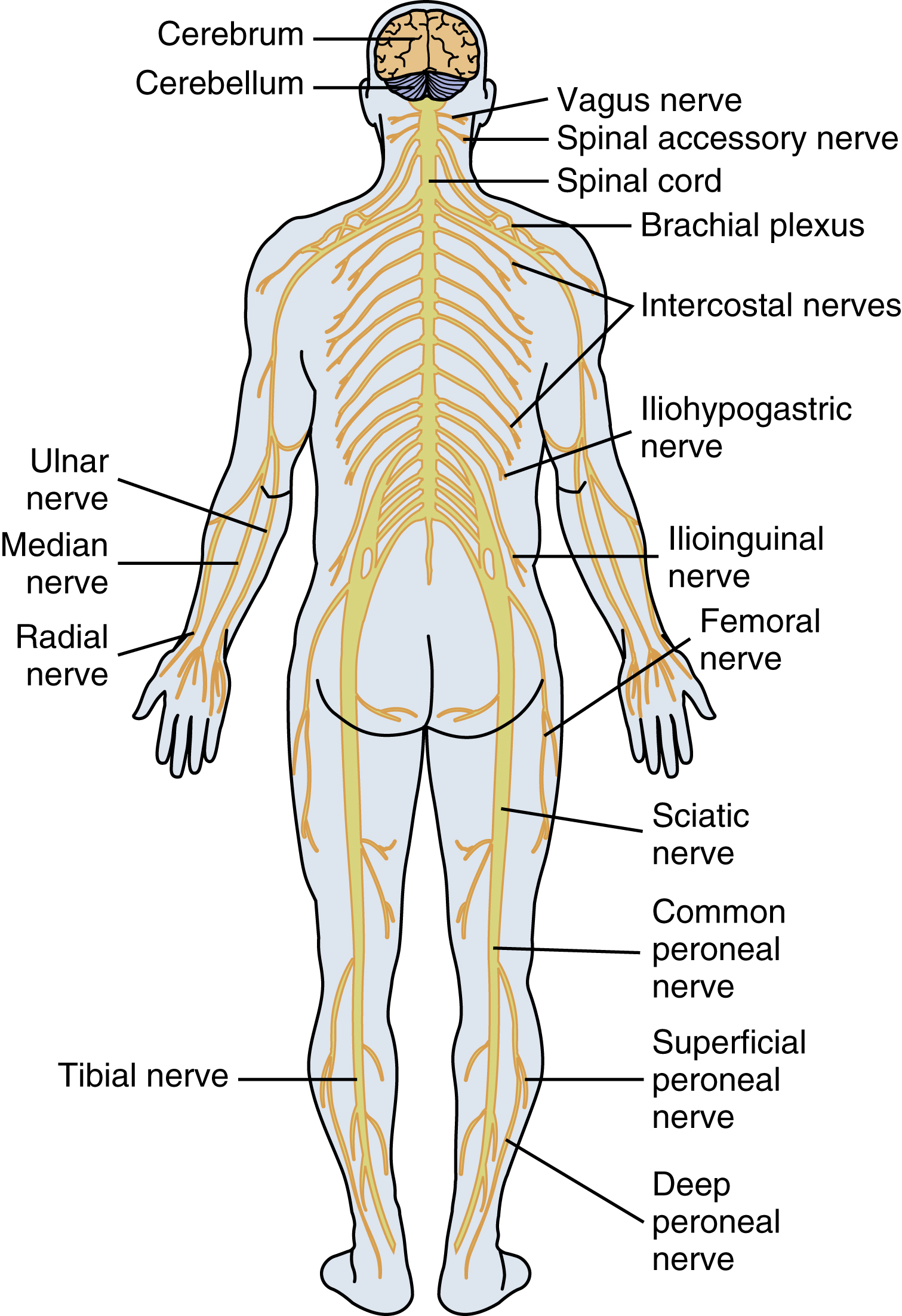peripheral nervous system, the motor and sensory nerves and ganglia outside the brain and spinal cord. The system consists of 12 pairs of cranial nerves, 31 pairs of spinal nerves, and their various branches in body organs. Sensory, or afferent, peripheral nerves transmitting information to the central nervous system and motor, or efferent, peripheral nerves carrying impulses from the brain usually travel together but separate at the cord level into a posterior sensory root and an anterior motor root. Fibers innervating the body wall are designated somatic. Those supplying internal organs are termed visceral. The autonomic system includes the peripheral nerves involved in regulating cardiovascular, respiratory, endocrine, and other automatic body functions. Nerves in the sympathetic or thoracolumbar division of the autonomic system secrete norepinephrine and cause peripheral vasoconstriction, cardiac acceleration, coronary artery dilation, bronchodilation, and inhibition of peristalsis. Parasympathetic nerves, which constitute the craniosacral division of the autonomic system, secrete acetylcholine; cause peripheral vasodilation, cardiac inhibition, and bronchoconstriction; and stimulate peristalsis. Injury to a peripheral nerve results in loss of movement and sensation in the area innervated distal to the lesion.

